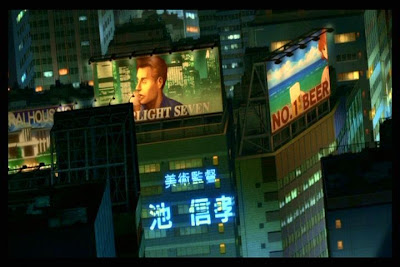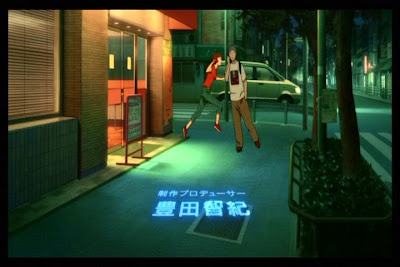A ‘wunderkammer’ is a
cabinet of curiosities, a collection of strange objects, or a group
of mundane of objects whose grouping together creates a strange
collection. The most renowned example is the extensive collection of
Rudolph II who had cabinet after cabinet of more or less anything
that one can think of. He was an obsessive collector and the modes of
classification and distribution of items within the collection tell
us a lot about how the royal collector organised his world-view. He
was the patron of Acrimbaldo whose famous double-image portraits
created human faces from aggregations of objects and animals. The
paintings can themselves be seen as wunderkammers.
Animator Jan Svankmajer is greatly inspired by Rudolph’s collections, as well as those of naturalists and other people who try to organise the chaos of the world into human systems. His films often collect items together into seemingly arbitrary groups, in Alice (Svankmajer’s adaptation of Lewis Carroll’s book), the titular character’s fall down the rabbit hole is replaced by a slow descent in a lift, passing different floors as she goes; each floor a wunderkammer of various objects, from natural curios to Victorian toys.
In Historia Naturae,
the different groups of the animal kingdom are explored in all of
their varieties, while he even refers overtly to Acrimbaldo’s work
in his heads made out of vegetables, kitchen utensils or stationary
in Dimensions Of Dialogue.
A modern incarnation of
Rudolph II is the eccentric Long Gone John, a sometime record
producer, sometime art entrepreneur, sometime vinyl toy manufacturer
and all-of-the-time collector. His unique life is explored in the
documentary film The Treasures Of Long Gone John, which places
its emphasis on two areas: his extensive collection of objects –
ranging from mummified babies to 1960s Japanese toys – that now
dominates his home to the point that he has moved out and converted
it into a museum, and his relationship to a particular generation of
artists associated with the underground art magazine Juxtapoz.
In fact, the film uses
Long Gone John predominantly as a jumping off point to discuss the
work of four artists in particular – Mark Ryden, Camille Rose
Garcia, Todd Schorr and the arguable founder of the movement Robert
(or Robt.) Williams. These artists are obsessed with the blurring of
high and low/pop culture (the movement to which they belong is
sometimes known as ‘low-brow art’, a term disliked by many of the
artists themselves). They take influence from the ephemeral and
popular; cartoons, comics, toys and corporate icons. Indeed, many of
them have produced vinyl toys with Long Gone John’s company. They
collect the pop culture objects that society forgets about,
re-present them as artistically valid and then produce their own pop
culture objects, to begin the cycle again.
Let us focus on two of
these artists, Todd Schorr and Robt. Williams, whose paintings
themselves are, like Acrimbaldo’s before, virtual wunderkammers of
the camp and kitsch. Take, for instance, Schorr’s painting The
Hunter Gatherer.
The elements of the
‘lowbrow’ movement can all be found in the image above; the
fascination with the short-lived products of the fifties and sixties,
the association between ancient idols and corporate ones, the
implication that our reverence for both is somehow primal, and most
importantly, the desire of human beings to collect these things. But
rather than an analysis of what these paintings might ‘mean’, I
want to focus on the multilayered ‘truth’ of imagery. In the
previous two posts I have argued that depictions are both more
conceptually complex and straightforwardly simple than photographic
imagery. On one hand, depictions have a multitude of possible layers
of interpretation as images, while on the other, when fiction
is introduced, depictions can offer us a diegetic object or character
that is more ‘true’ than a prop or actor.
Sticking with Schorr’s
painting, what we have is not only a depiction of a proto-human, but
depictions of a variety of art-objects (loosely; the artistic merit
of such toys might be debatable for some, but I will continue with it
as shorthand – I’ll define an art-object as any article that can
be evaluated on some deeper level than just the descriptive). These
art-objects are different from the being that collects them. While
the central figure exists only as a depiction, the toys are
depictions of things. The Adam West Batman toy, the Howdy
Doody puppet, the robot, are all paintings of objects that actually
exist (the other toys – Betty Boop and Mickey Mouse – are not so
simple). As images, these toys are themselves depictions; a toy of
Batman is not the actual character but a three-dimensional depiction
of the character. While the robot remains fairly consistently itself,
the toys of the already established cartoon characters become more
complicated – they are depictions of depictions of
characters.
Another Schorr painting,
Variations On Kitsch, gives us a similar premise – a
collector and his collection. But now the objects in the collection
seem to possess more of a life of their own. While in The Hunter
Gatherer, only Mickey and the Idol moved, here all of the kitsch
objects seem to be bouncing around the space, perhaps dancing to the
beat of the beatnik’s bongos. On top of this, though they possess
intentional nods to existing objects, the art-objects here exist
entirely as depictions. Though the astronaut caveman in the corner is
clearly designed to remind us of Fred Flintstone, he isn’t that
character, nor even a toy of that character, he remains a completely
unique object that exists only within the painting. The
relationship between the depicted art-objects to the real world
distinguishes the two paintings; the emphasis on the former being the
depiction of real toys (themselves depictions of characters), while
the latter is depictions of entirely ‘diegetic’ art-objects.
While we can evaluate the hunter gatherer’s collection on two
levels, as objects with their own pop cultural baggage or as
depictions of those objects by Schorr, how do we evaluate the
art-objects of Variations On Kitsch? As components of an overall
composition, or as virtual art-objects?
Such considerations will
be the focus of future posts, but for now let us stick with the idea
of these paintings as collections of virtual art-objects. Moving on
to Robt. Williams, two paintings offer up similar collections for our
multi-layered perusal. The first gives us an image with similar
levels of visual interpretation as The Hunter Gatherer, a vast
collection of art-objects that are depictions of real ones. Wooden
Spirits Persist Where Termites Fear To Tread presents us with another
collection that exists as a single depiction.
On the other hand, In
The Land Of Retinal Delights might, as a painting, appear to be
less interesting at first glance; the vast collection of objects
presented to us do not have the same multiplicity of possible
diegetic truth layers as Schorr’s do.
But what Williams’
painting lacks in diegetic complexity it makes up for in sheer scale.
The entire landscape in which the figure stands is made up of these
strange apparently plastic kitsch objects. At first glance they might
appear to be toys, the kind of cheap plastic ones that you get in
Christmas crackers; one appears to be a red spinning top, another a
green facsimile of a lunar landing pod. But these are only
superficial similarities of shape. In fact, these objects are
entirely surreal and virtual, depictions of themselves, not of
anything we might find in the real world. But each of these objects
is rendered in minute detail, each given a solid distinctness which
continues as far back as we can make out. Only the furthest peaks of
the distant hills reduce the objects down to coloured dots. This is a
collection of the imagination, a multitude of virtual art-objects
that we can only see through the medium of this painting.
Williams invites us to delve into his collection just as Long Gone
John does at his home-cum-museum, but while Long Gone John’s
objects are real and we can view them by walking through the space
that holds them, Williams’ collection is one we can only appreciate
via the depiction.
And this is where these
paintings have a particular resonance and relevance to a collector
like Long Gone John – as his own collection of real art-objects
contains many of these Juxtapoz paintings, themselves containing a
variety of virtual art-objects, his collection becomes augmented, a
collection of real objects, depictions of real objects and depictions
of entirely virtual objects.
One more Schorr painting,
The Pirate’s Treasure Dream, was created specifically for
Long Gone John (he’s the pirate king on the altar on the left); the
image depicts some of the various objects of his collection as
prisoners taken by the monstrous pirate band. Marching along in
chains, the prisoners are taken a step further from those in
Variations On Kitsch; they have become sentient characters
like their collector. They add yet another layer to the complex
imagery – they are depictions of characters that are toy depictions
of characters. That gives us four possible ways of looking at some of
these figures. One figure in particular is fascinating; the
bunnyduck, held aloft in the tentacle of the pirate octopus.
The complexity of this
figure lays in its history: the character appears in two earlier
Schorr paintings Romantic Notions Of The Mysterious East and The Spectre Of
Cartoon Appeal. In these paintings, he is a character, an amalgam
of Bugs Bunny and Daffy Duck, existing as a diegetic entity within
the world of the paintings.
But the character was
also produced as a vinyl figure in the real world. And in The
Pirate’s Treasure Dream, we are given not the character itself
but a depiction of a toy of a depiction of a character that is an
allusion to other characters (Bugs and Daffy, themselves only
existent as depictions).
These paintings, and
others like them, are so complex in their multilayered depictions
that they instantly set up a multitude of possible visual
interpretations and modes of evaluation. Depicting virtual
collections of art-objects both real and imagined, the painting
becomes a double itself; it is both an art-object in its own right
which can be appreciated as a single composition, but we can also
look through the depiction at the art-objects being depicted
and evaluate not one art-object but many – the paintings become
virtual wunderkammers.
- P.S.
.jpg)























































